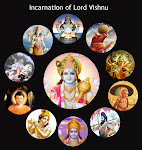Section 1 & 2- ( 09/29/13 Balvihar Week :3)
Beginning prayers
- Sahanaavavatu
- Meditation for 5 minutes
- Gurustotram verses 1-4and 14th verse
Gita chanting
- Chapter 14
Bhajan
- Raadhe Raadhe Raadhe
Bhagavatam Time:
- How was Bhagvatam written?
- Who is Narada Ji?
- Parikshit Meets Kali
Likhita Japa
Writing ‘Om’
Ending prayers and pledge
- sarve bhavantu sukhinah
- puurnamadah purnamidam
- arati
- Pledge
Bhagvatam Time:
We did a quick recap of what we did in the last class. All the kids were smart to give answers to all the question. We got a bunch of smart kids.
As we have seen in the last class, all the disciples gathered around Sutaji and Saunaka rishi asked a question how can one be happy forever. Sutaji replied the answer lies in the poem, Bhagvatam which was composed by Sri Veda Vyasa. One day Narada rishi came to see Veda Vyasa. On seeing Vyasa, Narada Ji asked him why he looked sad? He asked him if he is not satisfied and happy with his actions and thoughts? Vyasa replied inspite of compiling 4 Vedas, 18 Puranas and the great epic Mahabharata he was not happy and always had a feeling of unrest and dissatisfaction. Narada Ji told him he has described the Dharma of a human being well but haven't described the glories of Maha Vishnu. Saying so Narada Ji left and Vyasa Ji composed Bhagvatam.
In Bhagvatam we'll learn:
- How to be happy?
- How and why God took avataras
- What did He do
- Whom he saved and why
Tale: Who is Narada ji?
Narada was the son of a servant lady who was working in an ashram. A group of saints came to the ashram to spend 4 months there. Narada was only 5 years old then. He used to help his mother in serving the saints. The saints liked him very much. When the saints were singing the glories of Narayana, Narada used to listen to it and slowly started singing the glories of the Narayana. After 4 months, the saints left the ashram. One night Narada's mother was bitten was bitten by a snake and she died leaving Narada alone. Then Narada left the ashram and sat for meditation in a quiet place. Bhagavan blessed him and said that he will be born again as the son of Brahmaji. Few years later he died, and was reborn as the son of Brahmaji. The Devas gifted him with the veena. It is said that even today, he moves around with veena spreading the glories of the Lord.
Tale: Pariksit Meets Kali
King Pariksit was a very good king. He was nephew of Lord Krishna. One day when King Pariksit went for a stroll he saw a very strange sight. A well dressed mean man, named Kali, was kicking and torturing a white bull and a cow, standing close by was crying for help. The mean guy had pulled out 3 of its legs and was going to cut off its fourth leg. Seeing this terrible sight, King Pariksit got very angry and asked him who he was and why he was doing this terrible act of injustice.
King Pariksit was surprised to hear the bull speak. The bull replied may be all this is happening because of his past karmas. King Pariksit thought deeply and realized that the bull was the personfication of Dharma or virtue; the cow was representing the Mother Earth and Kali, the wicked man was the spirit of Kaliyuga, the Iron Age in which we are living. The bull's 4 legs represents;
- Austerity
- Purity
- Kindness
- Truthfulness
Brainstorming: Austerity, Purity, Kindness, and Truthfulness
1) Austerity:
Keeping our promises is austerity.
2) Purity:
Being pure.It's simple as the word itself implies.
3) Kindness:
Only when we have a kind and loving heart, we'll know the pain of others.
4) Truthfulness:
Speaking truth no matter what.
The three legs representing austerity, purity and kindness have already been pulled out and is standing on one leg, truthfulness and kali was about to cut that too.
The three legs representing austerity, purity and kindness have already been pulled out and is standing on one leg, truthfulness and kali was about to cut that too.
Thankyou,
Deepthy Aunty & Rama Aunty (Section 1)
Indira Aunty & Shrinivas Uncle (Section 2)

